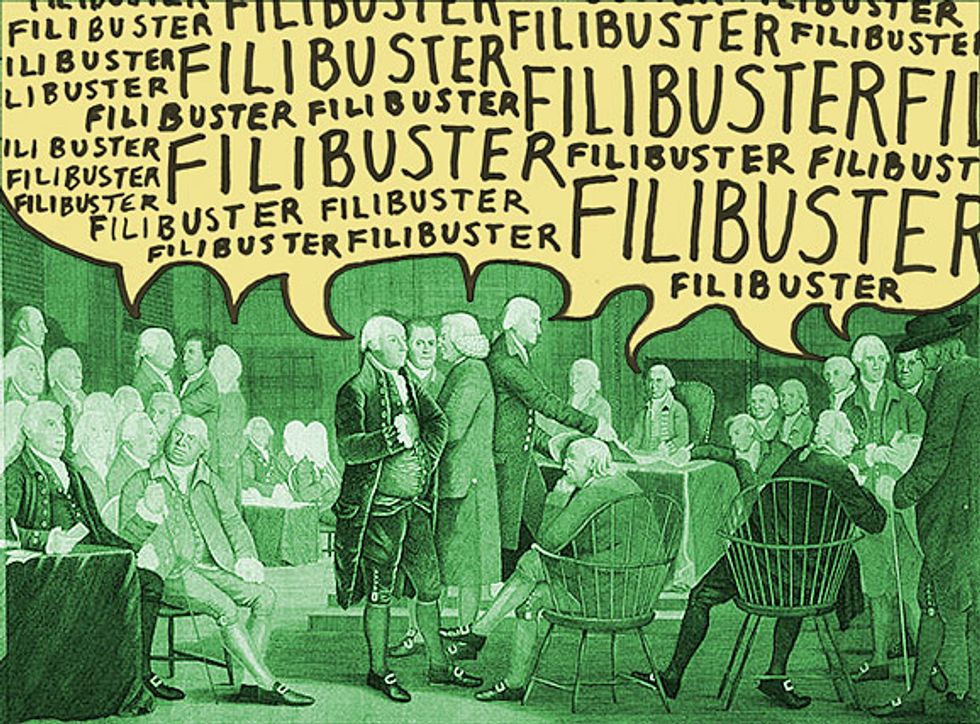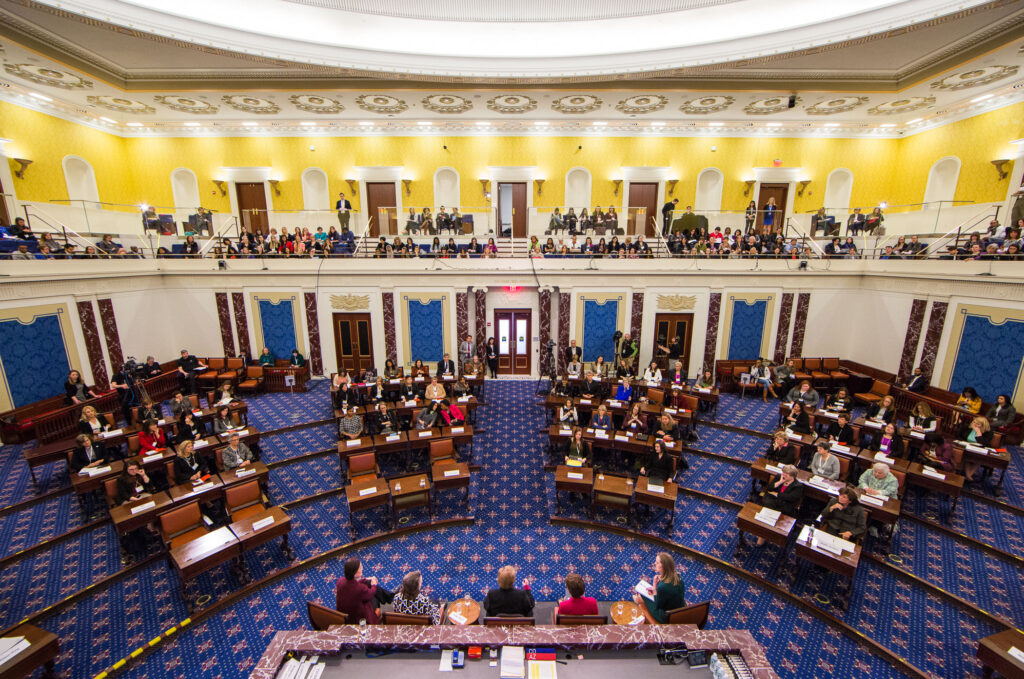Updated Tuesday, Jan. 26 at 1:30 p.m. PT.
The Senate filibuster allows a minority in the Senate to prevent the adoption of important legislation—even when the president and majorities in both the House and Senate are in favor.

Democracy requires two qualities—a government whose leaders are chosen by free and fair elections, and decisions that reflect the will of the majority.
Surprisingly, the U.S. does not always acknowledge the principle of majority vote. The unusual role of the Electoral College in presidential elections is but one example. On several occasions, the winner of the popular vote did not become president. In 2016, for example, Hillary Clinton received 48 percent of the popular vote, whereas Donald Trump received 46 percent. Yet the Electoral College vote—304 to 227—gave the presidency to Trump. Fortunately, the 2020 election did not suffer this same fate: Joe Biden defeated Trump in both the popular vote and the Electoral College (the views of a violent mob of insurrectionists notwithstanding).
The Senate Filibuster
Voting rules in Congress also reflect this unusual dynamic. This is most evident in the Senate. Under current rules, decisions requiring Senate approval are subject to debate. This includes the approval of pending bills as well as advice and consent for presidential appointments. But if debate does not end, no vote can be taken. The filibuster—a mechanism that allows a minority of senators to prevent debate from ending—precludes the Senate from taking action.
The filibuster is a powerful mechanism because it requires 60 senators (out of 100) to override it by voting to end debate, a process known as cloture. Recent changes in filibuster practice allow Senate votes on presidential appointments to executive branch positions and the federal judiciary to proceed based on a simple majority vote. However, the requirement that 60 senators must vote for cloture applies to most legislation (except for budget bills).
In other words, the Senate filibuster still allows a minority in the Senate to prevent the adoption of important legislation, even when the president and majorities in both the House and Senate are in favor. (As Ezra Klein writes in the New York Times: “President Biden’s agenda will live or die in the Senate. Odds are it will die, killed by the filibuster.”)
Senator Mitch McConnell, Kentucky Republican and new minority leader, is clearly aware of the sheer force of the filibuster, and he wielding what little influence he has in the Senate in an attempt to get Senate Majority Leader Chuck Schumer (D-N.Y.) to pledge not to get rid of it—an offer Schumer has vehemently opposed. Late Monday, McConnell signaled he’d drop this demand.
The filibuster is often described as a countermajoritarian mechanism that protects the Senate minority. It is also alleged to promote bipartisan collaboration. At times, the filibuster has fulfilled these important functions. But in most cases, the filibuster has been used as a partisan mechanism to undermine democratic governance.
It is no coincidence that the most notorious examples of the filibuster occurred in the midst of the civil rights era. In 1957, Strom Thurmond personally filibustered on the Senate floor for 24 hours to prevent debate on civil rights legislation. In 1967, Southern senators used the filibuster to prevent a vote on the Civil Rights Act for 74 days.
In recent years, the filibuster has been used with increasing frequency in the Senate. The consequences are significant. It has reduced the amount of legislation adopted by Congress. Both parties can point to the Senate filibuster to explain failed legislative efforts.
To be clear, the Senate’s voting rules are not required by the Constitution. They developed piecemeal in a process that can be traced to 1806. In fact, it was Aaron Burr who proposed changing the Senate rules that allowed a simple majority to end debate in the chamber. Burr’s proposal was not motivated by countermajoritarian concerns; it was a housekeeping measure designed to simplify Senate business. Because the filibuster is a Senate rule and not a constitutional mandate, it can be amended or rescinded by the Senate at any time—ironically by a simple majority.

Ending the Filibuster
With Democrats now in control of the White House and Congress, the Senate may soon consider whether to revise or eliminate the filibuster option for legislation.
For Democrats, there are many legislative proposals that would fail if the filibuster remains: Civil rights. Climate change. Immigration. Health care. Election reform. Even pandemic relief bills could founder in the face of the Senate filibuster.
Because the filibuster impedes the legislative process and counters democratic governance, it is time to reform it. But there is still an opportunity for the Senate to address legitimate goals of promoting bipartisan cooperation and addressing counter-majoritarian concerns.
For example, some commentators have suggested restructuring the filibuster process and placing the burden on those who want to continue debate. Instead of requiring 60 votes to override a filibuster and end debate, the Senate could require 40 votes to continue debate. Forcing senators to speak throughout their filibuster would also heighten the consequences of legislative obstruction by making it more difficult to sustain the filibuster.
Another procedural option would be to prevent the Senate from considering any other business while a filibuster is pending. This would heighten the consequences of the filibuster for both parties.
A different approach is to connect filibuster reform with other Senate procedures. One of the most consequential areas for Senate action involves providing advice and consent for judicial appointments, including appointments to the Supreme Court. While the filibuster has already been removed for such procedures, the Senate could still consider ways of addressing countermajoritarian concerns as well as the optics of voting on partisan lines for judicial appointments.
For example, the Senate could establish a bipartisan committee to consider revisions to the process used to review judicial appointments. And perhaps there are ways of defusing the significance of life tenure on the Court by revising the rules for senior status or developing staggered terms. With careful thought and cautious drafting, these changes would not even require a constitutional amendment.
Defending Democracy
One of the greatest failings of politicians who serve in the majority party is their refusal to consider how some rules will protect their interests when they are in the minority. This narrow time horizon promotes partisanship and deters cooperation. Yet bipartisan collaboration is a legitimate value.
As the Senate considers the future of the filibuster, it should establish procedures that uphold the principle of majority vote. But in crafting a solution, it should consider the shadow of the future. In the Senate, the Democratic party has at least two years of majority rule. In 2023, that may change. This is democracy at work.
You may also like:





